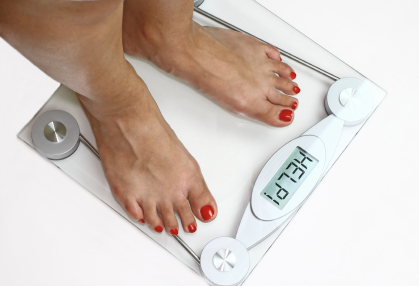Recently I was asked to review a “weight loss camp” for a client and give my opinion. After a review of their website I could not recommend it. While their intentions were good, there were several red flags that concerned me. The website boasted a low fat diet which is one of the main reasons I could not give it my personal thumbs up!
Just like any other fad diet, the low fat craze started in the 70’s and remains controversial to this day. It is the opinion of many of us in the health and wellness field that the low fat craze has contributed to obesity in this country.
Five reasons low fat diets don’t work for you!
- You’re too hungry! The research is becoming widely accepted that fat actually satisfies our hunger! Low fat diets, much like low calorie diets, can cause you to graze all day long and consume more calories than normal.
- Triggers binging! Remember when the low fat chips came out? Or, the Oreos? Bet you were tempted to eat twice as many! That little voice inside your head said “Go ahead have another. They are low fat after all!” Read your labels and pay attention to serving sizes, even if the package says low fat.
- Increases sugar intake! Most low fat foods add sugar to make up for the lack of flavor caused by removing fat. This can cause your blood sugar to fluctuate widely, which can hinder your efforts to lose weight.
- Eliminates the good fats! Healthy fats are an essential part of our diet. By consuming healthy fats, you raise the good cholesterol in your body. This in turn helps break down the less healthy cholesterol.
- It can affect your mood! One study published in the Journal of Affective Disorders has linked low and abnormal essential fatty acid intake to depressive symptoms. Depression can cause you to avoid exercise and other physical activity which will sabotage your efforts even more!
Here’s what other experts are saying:
“A multitude of studies have shown that consuming a diet with moderate amounts of fat―emphasizing sources of healthful mono- and polyunsaturated fats like nuts, seeds, oils, and avocados―can help reduce risk for heart disease. What’s more, certain vitamins require dietary fat in order for your body to process and benefit from them.” – Cooking Light Magazine.
Now before you going running off to eat a pound of bacon or fast food french fries — let me clarify. Fat is essential to our diet. However, calories are calories — and fat has more calories per gram than carbohydrates and protein. So once again, moderation is key.
You also want to choose your “fats” wisely. The research is pretty concrete that trans fats in packaged foods are causing heart disease and other health issues. Magazines like Cooking Light have great recipes that call for moderate amounts of healthy fat. These recipes also tweak the amount of saturated fats to help cut back on calories and cholesterol without losing flavor and nutritional value.
The proof is at the doctor’s office:
I have been eating moderate amounts of saturated and unsaturated fat for most of my life. I just had a blood test and was told I have a very high level of good cholesterol and a super low level of bad cholesterol.
Please understand, I am not bragging about me. I’m sharing this because after years of watching all of the diet crazes, it all comes back to a very simple concept. Avoid processed food as much as possible, and pay attention to portion sizes and caloric intake. Find out more about portion sizes and calories in my article titled How To Lose Weight Without Feeling Deprived Or Hungry! .
I hope this has been helpful and clarified a few things for you. My goal is to help you succeed and demystify all of the information in the media regarding weight loss. Please comment below and let me know if this has helped you or if you have a low fat story you would like to share!
Blessings!
Jennifer



